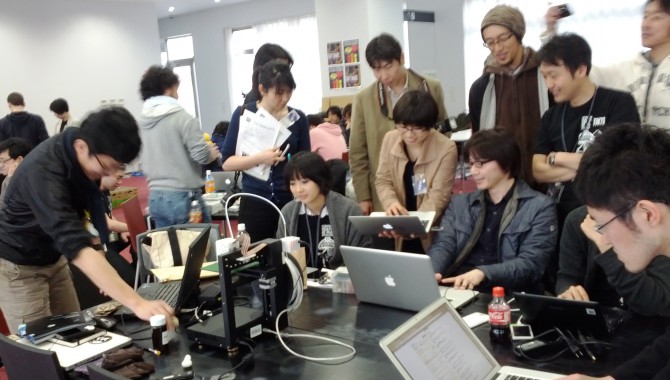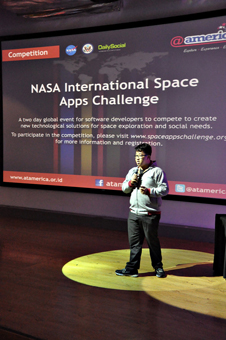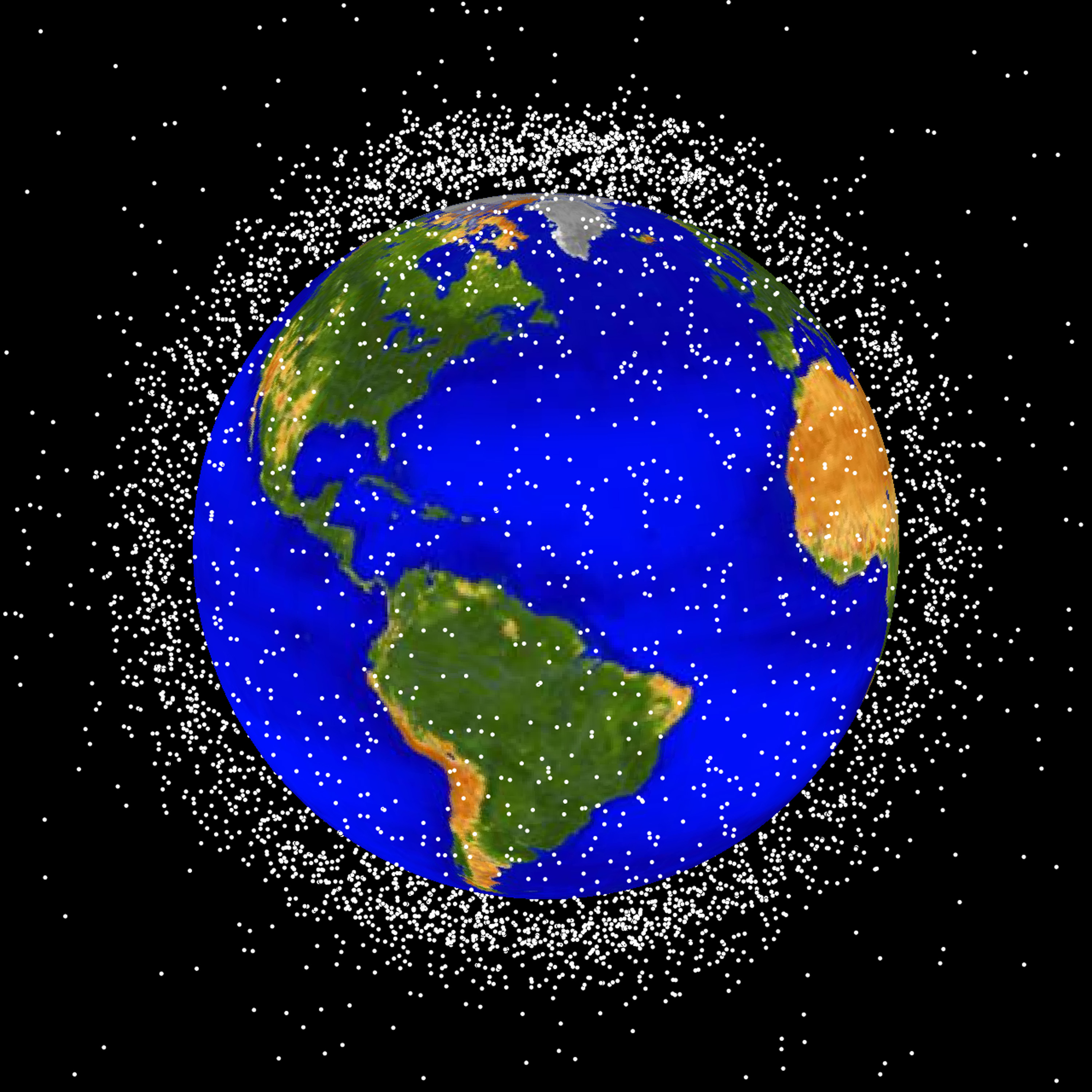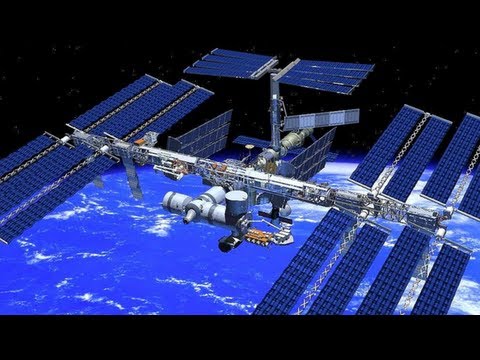
By Nick Skytland
One of the things astronauts who have had the privilege of traveling to space talk about when they return is what it’s like to see Earth from space, and the orbital perspective this brings. They talk about what it means to live in a world where we are more interconnected and dependent on one another than ever before, and how it shifts their thinking. They talk about what Astronaut Rusty Schweikart first observed in 1969 on Apollo 9: a world where our boundaries disappear, our problems overlap, and we realize the solutions are not one nation’s alone.
Although only about five hundred people have had the chance to physically experience this orbital perspective, the rest of us are starting to share this experience thanks to technology. We now live in an age where it’s possible for a record-setting eight million of us to watch Felix Baumgartner jump from the edge of space live on the Internet. We can take a photo on Mars and stream it to a mobile device nearly anywhere in the world just minutes later.
As people around the world become more technologically literate and experience this orbital perspective themselves, they will want to participate more directly in government affairs, and with a purpose much bigger than space exploration. I know because I was one of them.
Finding a Way to Contribute
Like many others in my generation, I wanted to work at NASA. I wanted to be the guy who flew in space. But the problem I had was I grew up in North Dakota—pretty much as far away from a NASA center as you can be in America—and had no connection to NASA. No one in my family had ever attended college, and I was destined to be an auto mechanic or a farmer. Thankfully, I had a teacher in kindergarten who was equally inspired by space exploration and invited the rest of us to watch an upcoming Space Shuttle mission live on national television.
Over the next couple years, I realized many of the assumptions we had as a government about how to engage citizens in space exploration were wrong. Or at least wrong given the changing environment.
That was the day that tragedy struck the crew of Challenger.
Though I didn’t realize it at the time, it was also the day that changed my life’s trajectory. It’s the day I realized I wanted be part of the solution to the grand challenges of our time—the ones that required the collective vision of us all. At the time, the only way I knew how to participate was to work at NASA. So that’s what I set out to do.
Years later I had an opportunity to work at NASA. I packed myself up, drove as fast as I could 2,000 miles across country and showed up months before anyone had a work assignment for me. I was ready and waiting. I wanted to be put in the game.
One month after I started at NASA full time, Space Shuttle Columbia broke up over the Texas skies. I spent my first few months walking around the fields of East Texas picking up the broken dreams of our nation and thinking about how risky and unforgiving space exploration can truly be.
While I was in East Texas, I noticed the other people who were there. There were forest rangers and firefighters. People who drove across the country to participate in what we were doing. Thousands of people were helping NASA. They gave everything they had—their time, their talent, their resources—to participate. It was the largest mass collaboration I had ever seen.
The Columbia recovery effort was a testament to what people can do if given the proper resources and permission to work together. People around the world were willing to contribute to NASA. They wanted an opportunity to do that, but we weren’t set up well to do it.

U.S. Embassy Jakarta partnered with NASA to bring the International Space Apps Challenge to Indonesia April 21–22, 2012, at high-tech cultural center @america.
Photo Credit: U.S. State Department/U.S. Embassy Jakarta, Indonesia
Collaborating on a Larger Scale
Over the next couple of years, I realized many of the assumptions we had as a government about how to engage citizens in space exploration were wrong. Or at least wrong given the changing environment.
It’s true citizens want to participate in NASA’s mission, but they want to do so on their terms, using common technology. They want not only to read about the Mars Curiosity rover, they want to drive it while sipping coffee in their pajamas somewhere in Idaho and thinking about how this might contribute to something locally relevant to them.
Thankfully, technology is opening doors so everyone can collaborate with government to help shape solutions to the grand challenges of our times: the ones that require not only government participation but participation by us all.
What this means for governments worldwide is participation is no longer limited to showing up to vote on election day, expressing concern by protesting about a cause, or accepting a government job. There are now ways to participate directly in government.
Admittedly, engaging citizens is something that is not easy to do. Although government has always been a platform for collective action (at least in the United States), the problem is it’s never been an efficient one at connecting people together for a common purpose and scaling their participation in a focused and useful way. But thanks to technology, connecting people to what we do inside government does not have to be complex. It is not rocket science.
Here’s the key: it’s not just about individual participation, it’s about mass collaboration. It’s about creating platforms that allow us to take advantage of the exponential power of what happens when a thousand eyes look at our toughest problems and we collectively develop a solution.
Mass collaboration is possible today because of the Internet and our place in history. Technology enables the creation and application of ideas at scales previously unimaginable, in a focused way. There are many good examples of mass collaboration at work today. If masses can peer-produce an operating system, write an encyclopedia, or co-create the Icelandic constitution, we should carefully consider what might come next.
Mass Collaboration at NASA
I have the privilege of leading a team of entrepreneurs and technologists who are focused on considering what comes next for government, specifically at NASA. Our core team consists of only four people, but we have been able to engage thousands in NASA’s mission by applying our experience in mass collaboration. We focus on scaling collaboration, using information technology to exponentially multiply the impact on the agency. This starts with the agency-wide open-government plan that lays out the entire vision, with more than one hundred initiatives that include open software, open data, and technology, and highlighted initiatives like general robotics and collaborative spaces.
In implementing NASA’s plan for open government, we quickly learned the agency has never really had an effective way to engage citizens on such a scaled and relevant way, so we set off to create one.

A team in San Francisco puzzles over The Pineapple Project, a software challenge to apply climate data to agricultural planning, during the 2012 International Space Apps Challenge.
Photo Credit: Elizabeth Sabet
Our vision was to engage people around the world in NASA’s mission and create a mechanism for them to collectively develop new solutions to challenges facing us here on Earth and in space. We have experimented with developing online platforms, leveraging our networks and social media, and partnering with industry leaders to plan technology development events all with the goal of connecting more people to what NASA is doing. This experience culminated in an event we first hosted in April 2012 called the International Space Apps Challenge.
The International Space Apps Challenge took place in twenty-five countries and resulted in more than one hundred solutions to challenges offered by NASA and its partners. It was the largest government-led mass-collaboration event to date, and a testament to what people can accomplish together if given the permission, opportunity, and resources. After 48 hours, more than 2,000 people around the world collaborated to develop new technology that had never existed before.
Two of my favorite innovations to come out of last year’s Space Apps Challenge are ExoAPI and Strange Desk. ExoAPI offers data from Kepler via an application programming interface (API) to make the data readable. NASA doesn’t have many APIs, but we have a lot of data, so we anticipate solutions like this setting the standard for what we might be able to do with the many terabytes of data we collect through our space missions in the future.
Strange Desk is an app that allows people to crowd-source observations of strange things—for example, weird weather, black swans, or dead bumblebees. The idea is if you have people around the world recording this information, you can see trends at a macro level that you might not have noticed before. The app is a great example of how citizen science can be applied to solving NASA challenges.
The International Space Apps Challenge demonstrated that the creativity and innovation that used to take place primarily behind closed doors within large institutions is increasingly taking place by people connected together online. The solutions developed were so impressive, and the demand to do another event so strong, we decided to host a second International Space Apps Challenge April 2021, 2013. (See “ASK Interactive” on p. 56 for additional information.)
The International Space Apps Challenge has inspired other government agencies to consider non-monetized collaboration to help address technical needs. We recently advised the Peace Corps on the creation and implementation of their own innovation challenge. The Peace Corps Innovation Challenge was held on December 12, 2012, in cities around the world. We are also helping with two other mass-collaboration events—Random Hacks of Kindness and the National Day of Civic Hacking—which will focus on improving our communities and the governments that serve them around the United States.
There are many challenges that need to be solved, and we believe that governments need to continue to be bold, to take risks, to do what intimidates most others, like when we went to the moon or landed a rover on Mars. We need to do the things that not only inspire our nation, but our world. We can’t do this alone. Solving the grand challenges of our time will require all of us. Just imagine what we could do together if we all shared an orbital perspective. We could improve our cities, reshape our economy, develop game-changing technology, improve outdated, outmoded, inefficient government at all levels. After all, once you see Earth from space, you realize we are all in this together.
Portions of this article have been adapted from the TEDxHouston talk, “We’re in This Together,” given on November 3, 2012.
Related Links
Nick Skytland at TEDxHouston from Gerty on Vimeo
About the Author
 |
Nick Skytland is the program manager of the Open Innovation Program at NASA Headquarters, where he leads a team of entrepreneurs and technologists who are responsible for directing the agency’s open government plan and digital government strategy, with goals toward releasing more high-value data sets online, pushing forward the use of open-source technology, and creating participatory opportunities to engage citizens in NASA’s mission. |
People all over the world–here, in Tokyo–participated in the 2012 International Space Apps Challenge.
Featured Photo Credit: Fumi Yamazaki









